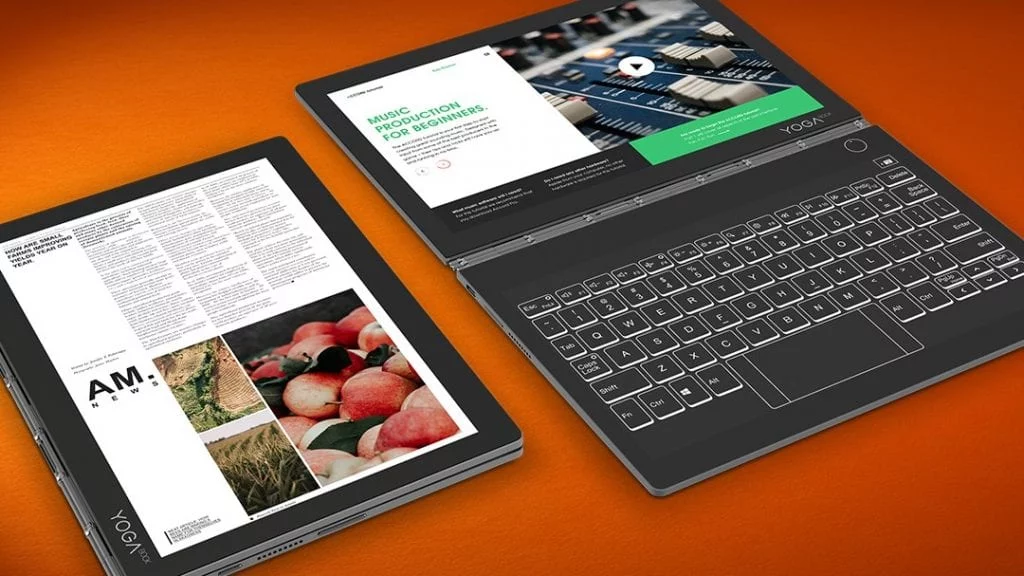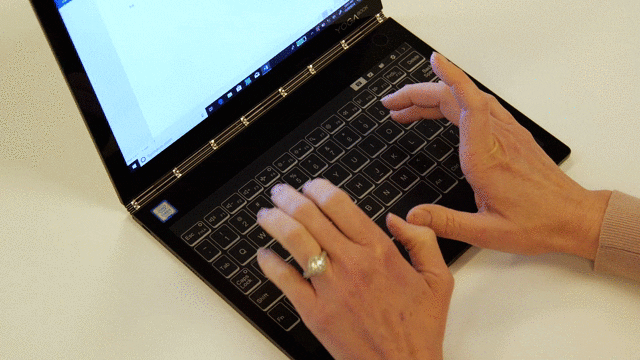E Ink keyboard on the Yoga Book C930 learns and adapts to different hands and typing style
Keyboards stretching from early typewriters to contemporary desktop PCs offer a fixed configuration, demanding that people adjust their typing style to whatever device they use. Small hands? Get ready to stretch those fingers. Big hands? Brace for cramps. Just imagine using the same keyboard as 10-year-old student as a 25-year-old professional basketball player. Even with Lenovo’s wide range of hardware solutions, it can be hard to find the right fit.
So what about virtual keyboards, the on-screen solution in smartphones and tablets? Most of them are, unfortunately, equally stagnant—inflexible and tied to the shifting dimensions of devices. But it doesn’t have to be that way. The “one size fits all” approach is changing.
“Virtual keyboards, like anything driven by software over pure hardware, can learn,” said Daryl Cromer, vice president of Lenovo Research. “The way a user types, where precisely their fingers land on a key, the corrections they make—all of this can feed into and customize the experience. A software-driven keyboard should tune itself to the person typing, which is exactly what we did with the Yoga Book C930.”

Lenovo’s Yoga Book C930 is a singular 2-in-1 device. There’s a beautiful, touch-sensitive, QHD screen, yes, but the traditional keyboard has been replaced by a highly adaptable E Ink display. The E Ink transforms from a notepad for writing and drawing (pen included), an e-reader, or an unprecedented keyboard. To keep the device slim, ultraportable, and dedicated to new avenues of productivity, the E Ink display tackles multiple jobs. With such a heavy focus on versatility, how does the touch keyboard actually perform?
“We wanted this to feel as much like a traditional keyboard as possible without compromising the other uses of the E Ink screen,” said Toshiaki Jozawa, director of Lenovo Research. “The keys animate slightly, appearing to depress, offering the visual cue many people are used to, and they offer customizable haptic feedback. While virtual, this gets closer to a truly tactile experience.”
Each keystroke sends that haptic vibration through the fingers, and it also sends a signal to the C930’s algorithm. Consistently tapping near the inner edge of the “P” key? The brains behind the keyboard make that area more sensitive. Almost hitting the “G” every time you reach for the “H”? The active area will shift accordingly. This is called dynamic key adjustment, or ergonomic virtual layout (E-VL).

“Your habits and preferences are logged and algorithms actively accommodate them,” Cromer said. “This is a relatively simple example of making devices smarter. To my mind, there’s no excuse to miss opportunities like this to infuse our tech with greater intelligence.”
There’s certainly some adjustment to typing on the E Ink screen, but as you learn to work with the keyboard, it learns to work with you. The more you type, the better you both perform. The keyboard appearance does not change, so these adjustments are only perceptible through increased efficiency and ease.
“We want every device we make to be smarter, more intuitive, and more connected,” Jozawa said. “The Yoga Book C930 builds on the previous generation to create new ways of being productive and creative—all while adjusting to our customers. The E Ink keyboard is one way of being both more adaptive and inclusive.”
